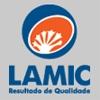Explore all the information on
Mycotoxins in poultry
Common mycotoxins associated with mycotoxicoses in poultry include aflatoxins, fumonisins, zearalenone, ochratoxins, and trichothecenes such as deoxynivalenol and T-2 toxins. Diagnosis requires detection and quantification of the specific mycotoxin. Treatment includes removal of the source of the mycotoxin and supportive care. Mold mitigation strategies can be used for prevention. Mycotoxicoses are diseases caused by the poisonous effects of the toxins produced by filamentous microfungi (ie, toxigenic molds). Hundreds of mycotoxins are known and can produce mild to severe toxic effects when they occur above levels of concern. The importance of mycotoxin problems in poultry is probably considerable yet difficult to measure. Chronic low levels of exposure to more than one type of mycotoxin appears to be a commonality, yet is less clinically evident.
Dr. Carlos Mallmann presents some of the most harmful mycotoxins that can attack poultry, and how to recognize and prevent them at the Feed Safety Seminar 2.0 in China. ...
Comments : 2
Recommendations: 0
1. Introduction Contamination of cereal grains and their byproducts by mycotoxins is a worldwide problem negatively affecting poultry production [1]. Two Fusarium mycotoxins which are among the most toxic and frequent feed contaminants are the trichothecene deoxynivalenol (DON) and fumonisins (FUM). DON is produced as a secondary metabolite by Fusarium graminearum and Fusarium culmorum, whereas FUM are secondary metabolites which are mainly produced by Fusarium verticillioides...
Comments : 1
Recommendations: 0
1. Introduction Mycotoxins are secondary toxic metabolites produced by filamentous fungi which, even at low concentrations, represent an important danger for both animal and human health [1,2]. Currently, over 300 mycotoxins have been identified worldwide, being aflatoxins, ochratoxins, zearalenone, trichothecenes, and fumonisins, the most frequently found with synergistic toxic effects reported when more than one of these mycotoxins are present in the feed [3,4]. Mycotoxins are...
Comments : 1
Recommendations: 0
1. Introduction Mycotoxins are secondary toxic metabolites that are produced by fungi growing on food products, such as corn, peanut, and wheat, among others [1]. Exposure occurs predominantly by the ingestion of contaminated feed, when contaminated cereals such as corn, wheat, peanuts and sorghum, as well as other raw materials, are used in the preparation of animal feed [2]. Aflatoxins are produced by fungi of the genus Aspergillus, particularly A. flavus, A. parasiticus...
Comments : 2
Recommendations: 8


Effects of Muco-defen® on Clostridium perfringens-induced necrotic enteritis in broilers
Suggested link
Mycoad and Mycoad AZ adsorb and retain mycotoxins in the gastrointestinal tract to be excreted through the feces, eliminating or diminishing toxicity and immunosuppression, with a significant improvement in animal performance. Know more about these products developed by Special Nutrients and distributed by APSN Biotech in Malaysia. Special Nutrients is a worldwide leading supplier of scientifically proven mycotoxins binders. ...
Comments : 2
Recommendations: 1
Corn-soya based mash diet has problem in flowing in the feeder and it gets stuck in the bridge. Some of the literature say that sodium bentonite can be mixed at the rate of 2kg/ton to overcome this problem. I need practical suggestion regarding use of sodium bentonite in poultry mash feed. And is there any other more effective solution to this problem other than using clay? ...
Comments : 15
Recommendations: 0
Nancy Zabe Collette, Technical Services and Applications Manager at Vicam Waters, points out the main problems caused by mycotoxins in the feed, the benefits of VICAM immunoaffinity column products, and more in this interview
...
Comments : 1
Recommendations: 1
835 µg/kg Fumonisin B1 LC-MS 290 µg/kg Fumonisin B2 LC-MS 43 µg/kg Zearalenone LC-MS Dear all, Are these level normal for layer breeder feed? If not, what is the normal level for these toxins in poultry feed & what will be the negative effect of it on poultry health if it is high? ...
Comments : 0
Recommendations: 0
.jpg&w=3840&q=75)

How to determine the nutritional quality of feeds and raw materials?
Suggested link
1. Introduction The consumption of poultry meat has shown an increase from 2016 (116,845.36 thousand metric ton) to 2018 (120,884.63 thousand metric ton) [1]. Moreover, during the period 2020–2029, global livestock production is expected to expand by 14%, poultry remaining the fastest growing meat accounting for about half of the projected increase in total meat output, while world population is expected to grow only by ca 1% per year [1]. The goal of the poultry...
Comments : 0
Recommendations: 2
1. Introduction Poultry and mycotoxins have been closely linked for several decades, as they are one of the most sensitive animal species to the toxic effects of mycotoxins. In the poultry industry, the ingestion of aflatoxin B1 (AFB1) lead to the impairment of all the essential productive parameters [1,2] and decreased resistance to common infectious diseases due to the depression of the humoral and cellular immune responses [3,4], resulting in substantial annual economic...
Comments : 0
Recommendations: 1


Developing effective natural solutions for animals - Liptosa: 2020 Summary and 2021 Challenges
Suggested link
Over four years of research resulted in the development of an in vivo blood spot testing method for mycotoxins and the launch of the RISE ® Platform. One year later five key learnings have emerged that have relevance across...
Comments : 5
Recommendations: 1
In 2021 mycotoxins semiannual survey, Life Rainbow Biotech randomly collected 163 feed samples of raw materials and feed mills in farms and analyzed. The samples were tested for aflatoxins (B1, B2, G1, and G2), zearalenone, fumonisins (B1, B2, and B3) and deoxynivalenol (DON) by the ELISA Mycotoxin analysis kit. Results: 163 feed samples collected, and 74.8% were contaminated with Zearalenone and 71.8% contaminated with Aflatoxins (table 1). The maximum concentrations of...
Comments : 3
Recommendations: 1
The identification of mild to moderate gizzard erosions (GE) in more than 20- 30% of the healthy commercial broilers examined in post mortem sessions, is commonly found in several countries in the Americas and Asia. The gizzard, also called...
Comments : 7
Recommendations: 15
1. Introduction The Food and Agriculture Organization of the United Nations (FAO) estimated that 25% of the cereal production is contaminated by mycotoxins [1]. Aflatoxin B 1 (AFB 1 )—the major secondary metabolite of Aspergillus flavus, A. parasiticus, and A. nomius—has adverse effects on humans and animals that result in health disorders and economic losses. To avoid these harmful effects, many physical, chemical, and biological decontamination...
Comments : 0
Recommendations: 0
Arnau Vidal, Toxin and Stress Manager at Innovad, speaks about the mode of action of Myco-Marker® which allows detection and diagnosis of mycotoxin-mediated health and performance issues either in individual animals or in a population, helping to identify the causative mycotoxins and developing appropriate mitigating strategies....
Comments : 4
Recommendations: 7
Some causes of mottled eggshells phenomenon can be heat stress and stress in general, diseases that affect the reproductive tract, contamination by mycotoxins, deficiencies of calcium and/or manganese and poor absorption of nutrients....
Comments : 0
Recommendations: 2
Storage of high moisture feed is one of the major problems for production of aflatoxins. Storage of feed for a month with 13% moisture was not safe to prevent aflatoxin (AF) production. However, the production of AF at 13% moisture level can be completely inhibited by adding fumaric acid @ 0.20% or citric acid @ 0.45%. At 15 and 17% moisture level in feed, more than 0.50% of fumaric acid or citric acid is required for complete inhibition of biosynthesis of aflatoxins. Fumaric acid was more...
Comments : 28
Recommendations: 5
Necrotic enteritis is a major concern in poultry farms because of its association with decreased performance. After the ban of antibiotic growth promoters, a group of feed additives emerged as tools to fight necrotic enteritis....
Comments : 13
Recommendations: 1
The addition of mycotoxin sequestrants to mycotoxin contaminated diets has been considered the most promising dietary approach to reduce the negative effect of mycotoxins. Adisseo has developed a portfolio composed of Unike® Plus, Toxy-Nil® Plus and Toxy-Nil® to propose the best-suited solution to a specific challenge. Toxy-Nil® : Reliable protection against moderate-level mycotoxin contamination Toxy-Nil® Plus: Powerful protection against broad-spectrum mycotoxin contamination
Unike® Plus:...
Comments : 2
Recommendations: 5
1. Introduction Deoxynivalenol (DON) is a secondary metabolite produced by Fusarium fungi. DON is the most widespread mycotoxin found in grains such as wheat, rye, barley, maize, oats, and their byproducts [1,2]. A recent survey, reported that DON is the most frequent contaminant of feedstuffs in Europe [3]. From 4311 samples evaluated, 63% were positive, with an average positive level of 0.6 mg/kg and a maximum of 40.7 mg/kg. For poultry feeding stuffs, the recommended maximum...
Comments : 0
Recommendations: 2



.jpg&w=3840&q=75)








.jpg&w=3840&q=75)




.jpg&w=3840&q=75)













